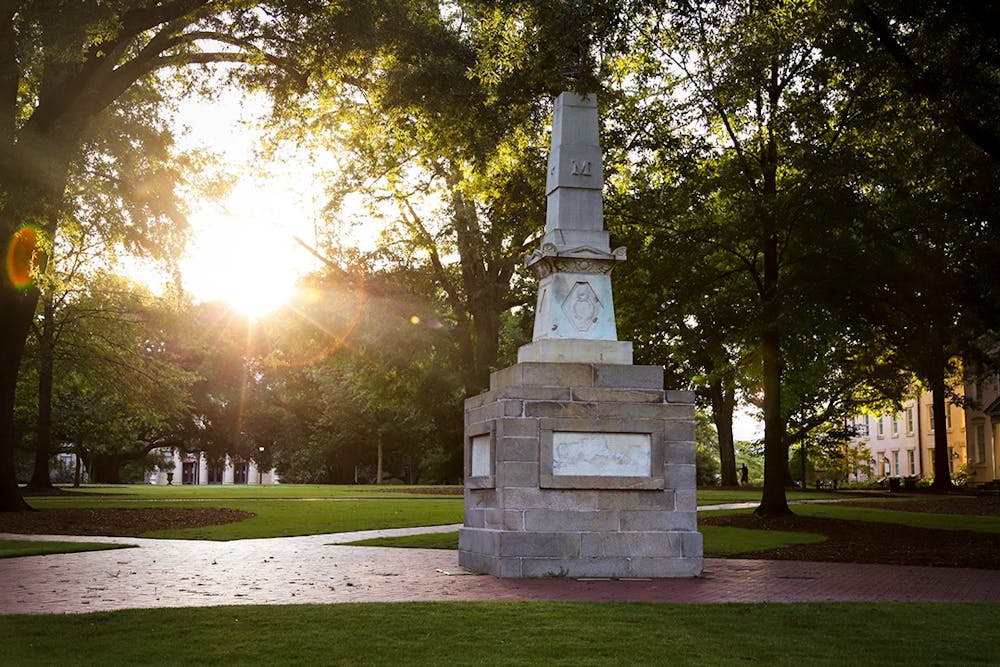Even though USC has made progress since its founding, Lana Burgess, faculty curator for McKissick Museum, believes it is important for people to learn about the history of women at the university.
Burgess said enslaved women played a role in building our campus, specifically the Horseshoe.
“It's also important to realize that the university itself hired and contracted for slave labor,” Burgess, a clinical professor of art history and museum studies, said.
USC political science professor Francis Lieber enslaved a woman and her daughter in 1836, according to the McKissick Museum project "A Woman’s Right," which Burgess was the project manager of.
The woman’s daughter was presumably impregnated by a student of the university, and this pregnancy led to a miscarriage that caused her death. Lieber is the namesake of Lieber College, which is located on the Horseshoe.
“We can’t presume to know those experiences, but it’s just important that we are recognizing them and that they are being shared,” Burgess said.
In 1874, Celia Emma (Dial) Saxon and sixteen other Black women enrolled at the State Normal School, which was located inside of Rutledge Chapel on the Horseshoe. Three years later, Saxon and seven of the other women graduated from the State Normal School during the same year the school closed.
For over fifty years after her graduation, Saxon educated secondary-level students in the Columbia area at Howard School and Booker T. Washington School. She also taught at a summer institute for African-American students of all ages.
An elementary school on Blossom Street was named after her in her honor in 1930. Now, it is commemorated by a historical marker where the Strom Thurmond Wellness and Fitness Center stands.
Katherine Heyward became the first female department chair in the university in 1925 when she headed the Department of Fine Arts at USC. Now, an art history classroom in McMaster School is named in her honor.
“She was very sophisticated,” Susan Felleman, professor of art history and film and media studies, said.
In 1895, Frances Guignard Gibbes was the first woman to enroll at USC, and in 1898, Mattie Jean Adams was the first woman to graduate from the university.
However, Claudia James Sullivan had to fight to be the first woman to graduate from the USC School of Law in 1918. After being denied the chance to enroll in the law school by university administrators, Sullivan took matters into her own hands by lobbying the State House for the right to practice law as a woman.
According to Burgess, Sullivan laid the foundation for future women at the USC School of Law, and her story is an example of believing in yourself and refusing to take no for an answer.
“There’s a saying, ‘you can either follow the rules or break the rules and make apologies later,' and I think that’s how we’ve been able to achieve so much on this campus and for women in this community,” Burgess said.
Sullivan paved the way for women like Jean Toal, the first female Chief Justice of the South Carolina Supreme Court, and Sarah Leverette, the first female faculty member of the School of Law.
Edna Smith Primus became the first Black woman to graduate from the USC School of Law in 1972. After graduating from law school, Primus was the vice president of the ACLU in South Carolina and devoted much of her work to helping impoverished women.
Mana Hewitt, a USC alumna and a senior instructor in the School of Visual Art and Design, recalls how there were very few female faculty members while she was in school.
“I believe that just the women’s movement, in general, started a new awakening and universities began to realize that they needed a more diverse teaching staff,” Hewitt said.
Hewitt also remembers the exclusion of female artists from her curriculum during her undergraduate education, and she roughly quotes that one of her art history textbooks said it did not include any female artists because they had never done anything significant.
For the future, Hewitt hopes that the recognition of women’s history will be more interwoven throughout the year instead of in one month. She also hopes for more curriculums that include women, and for salary equality for women from every walk of life.
“Women's History Month means to me, it is recognition of all the women, for all time, that have persevered, and that no matter whether she was a homemaker, or a physician or, you know, an artist, that women throughout history have persevered and gotten up every morning and done what they had to do to make the world, hopefully, around them better,” Hewitt said.

